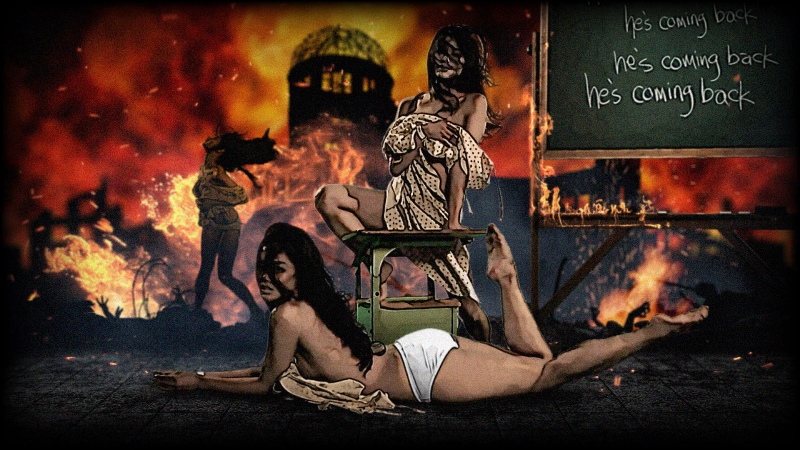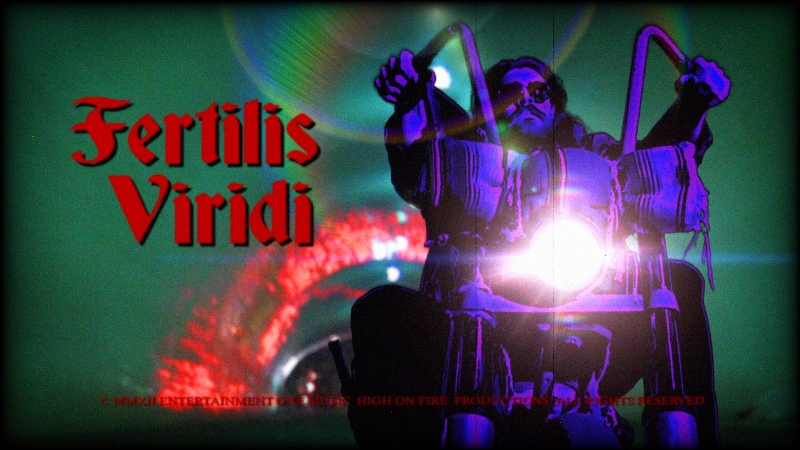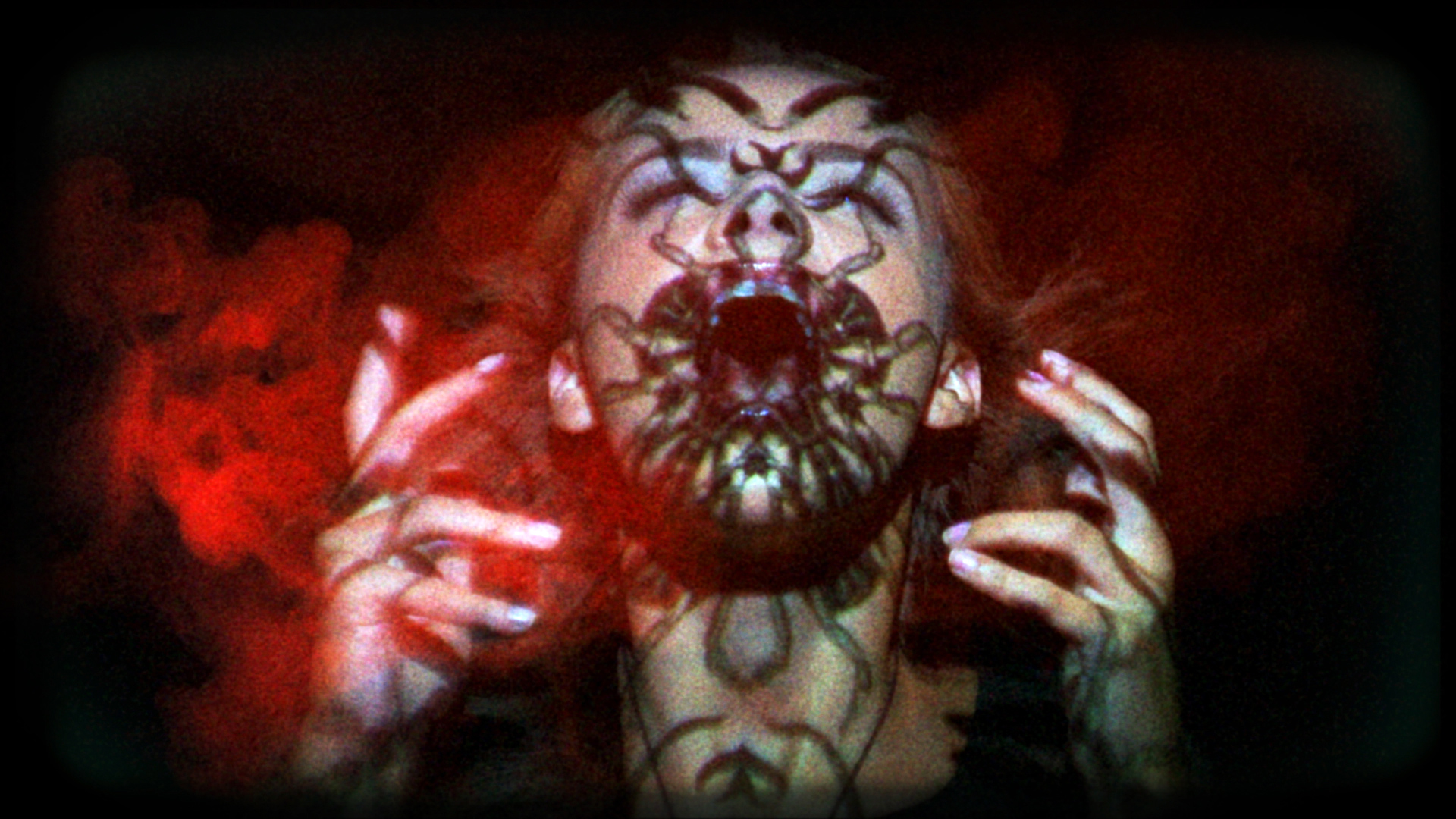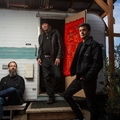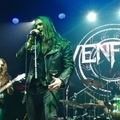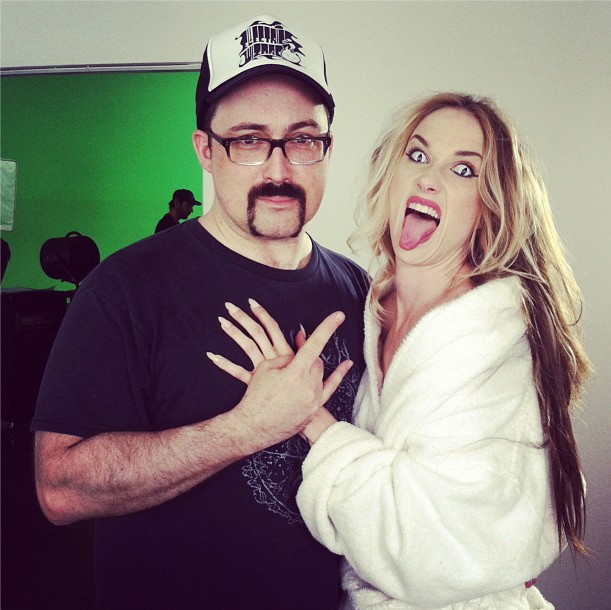
Ha az ember behatóbban tanulmányozza az utóbbi évek legötletesebb rock, illetve metal videoklipjeit, jó eséllyel találja Phil Mucci nevét a „rendező” rovatban. Az amerikai filmes mára teljesen egyedi világot teremtett, amely sok tekintetben támaszkodik az animációra és a szürreális / pszichedelikus / sci-fi elemekre. Azt, hogy ez a fantáziadús stílus utat talált az emberekhez, mi sem bizonyítja jobban, mint az a tény, hogy számtalan metal magazin éves szavazásán végeznek az élbolyban az aktuális munkái az „év videoklipje” kategóriában. A Monster Magnet-féle The Duke nótához készült kisfilm történetesen nálunk nyerte el ezt a címet legutóbb. Pályája eddigi alakulásáról, az általa előszeretettel alkalmazott technikákról, a legemlékezetesebb projektjeiről kérdeztük a mestert.
Az utóbbi időben elég népszerű videókat készítesz rockzenekarok részére. Te magad is a műfaj rajongója vagy?
Phil: Igen, persze! Zenében „mindenevő” vagyok, de hard rockot és metalt kissrác korom óta hallgatok. Ozzy Osbourne-tól a Diary of a Madman volt a legelső CD-m, amelyet megvásároltam.
A diabolikfilms honlapját – diabolikfilms.com – végigböngészve úgy tűnik, hogy te is "hagyományos" videók készítésével kezdted és később jutottál el, a már-már szinte védjegyednek tekinthető képregényszerű videókig. Hogy indult a pályád filmesként?
Phil: Fotósként kezdtem New York Cityben és rengeteg zenei, divat, meg reklám témájú képet készítettem – tele különleges effektekkel. Idővel aztán egyre kevesebb örömömet leltem ebben a fajta munkában, így amikor már elég pénzem volt, megcsináltam az első rövidfilmemet, a The Listening Dead-et. Mindjárt a forgatás első napján ráeszméltem, hogy igazából filmezni szeretnék, és amikor a film a világ minden tájáról kapott elismeréseket a különböző filmfesztiválokon, elköteleztem magam a szakma mellett.
A videoklipekig persze rögös út vezetett. Meg kellett győznöm (legalábbis kezdetben) a kiadókat arról, hogy megbízhatnak bennem és meg tudom valósítani, amit akarnak. Ezért van, hogy a korai klipek „sablonosabbak” ami a stílust illeti. Akkor még több pénzük volt a kiadóknak és mindig ott lihegett valaki a nyakamban. Rick Ernst a Roadrunnernél volt az első, akitől abszolút szabad kezet kaptam kreatív dolgokban, amikor az Opeth klipjén dolgoztam. Ekkor kezdett kifejlődni a saját egyedi stílusom.
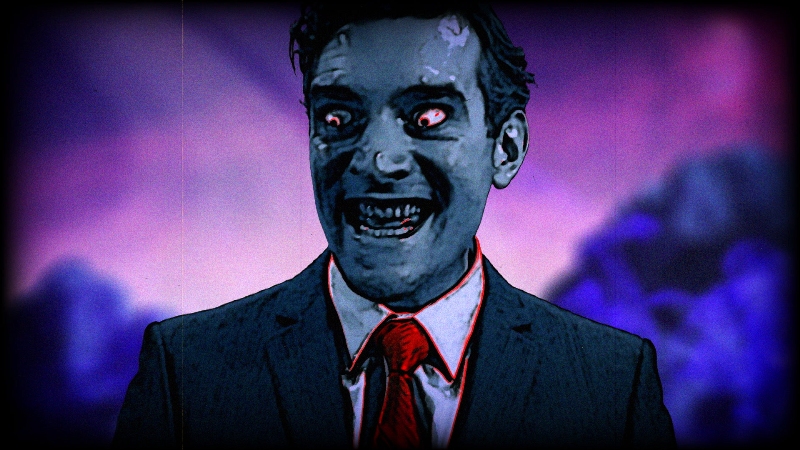
Nyilván nem kulisszatitkokra vagyunk kíváncsiak, de kicsit beavatnál minket az utóbbi időben készült videók elkészítési technikájába?
Phil: A stílus, amelyet kifejlesztettem, teljességgel szükségszerűségből alakult ki. Értem ezalatt a videoklipekre, különösen a rock és metal videókra szánt szerény anyagi keretet. Ha tele vagy bombasztikus ötletekkel, de nincs pénzed, akkor kreatív megoldásokat kell keresned, hogy megvalósítsd az elképzeléseidet. A színészek játékát zöld vászon előtt vesszük fel, hogy a helyszíneken spóroljunk időt és pénzt. Autó-maketteket használunk valódi járművek helyett, hogy spóroljunk a bérleti díjon és a biztosításon. Olyan kezdő művészekkel építtetünk miniatúrákat, akik velünk szeretnének dolgozni, hogy megmutassák a tehetségüket. A sajtó visszajelzései a végeredményre hatalmas segítséget jelentenek nekünk ebből a szempontból.
Ami általánosságban a technikai oldalt illeti, az Opeth-féle The Devil’s Orchardnál elhatároztam, hogy megszabadulok a fotó-realizmus béklyóitól. A hollywoodi filmek speciális effektjeihez hasonló szintet produkálni iszonyú költséges, szóval tudatosan döntöttem el, hogy nem fogok versenyre kelni azokkal. Elhatároztam, hogy nem korlátozom magamat azokra, és hogy inkább az animáció, na meg a régi, a számítógép-korszak előtti filmek világából merítek. Imádom a régi speciális effekteket, úgyhogy élvezet számomra ez a megközelítés. A színészeimet rotoszkóp-animációs megjelenéssel ruházom fel, így leegyszerűsítem a színeiket és jobban elvegyülnek a klipek szürreális környezetében. Igen sokféleképpen valósítunk meg bizonyos speciális effekteket, ami szerintem izgalmasabb a nézőnek. Nem játsszuk meg, hogy bármi is „valóságos” volna, vagyis szabadon garázdálkodhatunk és felhasználhatjuk azt, ami klasszul néz ki.
Ha jól néztem a videók stáblistáját, akkor gyakran ugyanazok a személyek tűnnek fel szereplőként. Ők jó barátaid, vagy a stábod tagjai? Ha már itt tartunk, röviden bemutatnád a veled egy csapatban dolgozókat?
Phil: Csak egy srác van, akivel az Opeth klip óta csinálunk együtt nagyjából mindent. Ő a producer-társam, Ian Mackay. Azóta vagyunk barátok, amióta a második rövidfilmem, a Far Out kapcsán megismerkedtünk. Ian nem pusztán színészként és producerként tevékenykedik, voltaképp ő az alapítója a produkciós vállalatunknak, a Diaboliknak. Stop motion animációval foglalkozik, maketteket készít, fest és millió mást is csinál. Ian nélkül a munkáink fele sem sikerült volna úgy, ahogyan sikerült.
A csapat másik kulcsembere Jeff Speed, akinek majdnem mindenben benne volt a keze a High On Fire-féle Fertile Green óta. Egészen kicsi létszámú stábbal forgatunk és Jeff operatőrként kihagyhatatlan a zöld vásznas felvételekhez. Barátom és maga is filmes, szóval tudja, hogyan kell keményen melózni és elérni valamit. A tesója, Chris Speed szintén ott dolgozik velünk a forgatásokon és sok saját miniatúránkat is ő készítette el. Ilyen a Monster Magnet The Duke klipjében a reaktor és a pentagram alakú ufók. Ezeknek a srácoknak az érdeme, hogy annyi jó felvételünk készül a forgatások napján, és hogy annyi varázslat rejlik az utómunkálatokban.
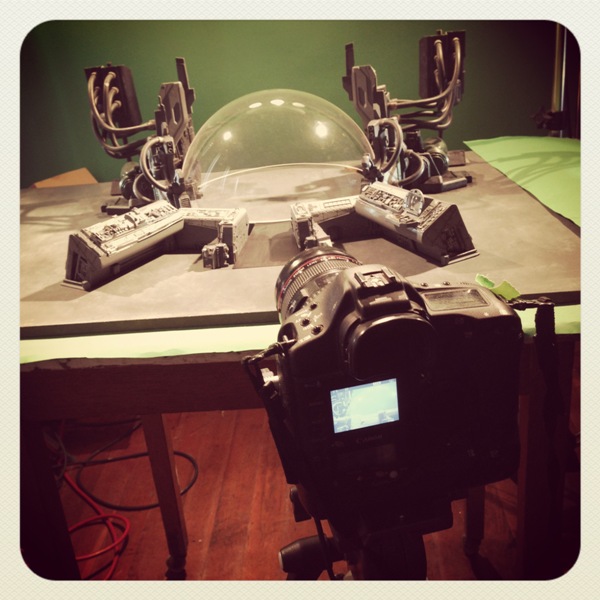
Korn, Halestorm, Opeth, Pig Destroyer, Stone Sour, High On Fire, Huntress, Monster Magnet stb. – elég veretes névsor. A zenekarok, a menedzsmentek keresnek meg egy-egy lehetőséggel, vagy neked van valamilyen ötleted, amely passzol egy zenekar adott dalához és te jelentkezek náluk?
Phil: Kezdetben ügynökök és ügyvezető producerek mutattak be a kiadóknak, ahonnan aztán megkaptam a felkérést, hogy „hozzak össze valamit”. Amíg nem vagy ismert, ezek a dolgok így működnek: a kiadó kiküld egy dalt és felkér néhány rendezőt, hogy írjon hozzá forgatókönyvet. Utána kiválasztja a szerintük legjobban sikerülteket és megmutatják azokat a zenekarnak. Ez persze így gáz, mert minden hatalmat a kiadónak ad. Manapság azonban már zenekarok, menedzsmentek és kiadók is megkeresnek közvetlenül és tesznek ajánlatot klipekre – tehát nem pusztán forgatókönyv megírására, amelyből „akár” video is lehet. Ez a módszer mindenki számára sokkal kedvezőbb, hiszen közvetlenül a zenekarral beszélek először és képet kapok arról, miért kerestek meg, mit szeretnének stb.
Magamtól, felkérés nélkül egy alkalommal kerestem meg zenekart konkrét ötlettel, de őszintén szólva hiba volt. Majdnem két hetet vesződtem a klip forgatókönyvével, mert megihletett a dal. A bandának és a menedzsmentnek tetszett, amit csináltam, a kiadó viszont nem akarta kislemezen kiadni a számot, így nem is kaptam pénzt a klip elkészítésére.
Az Opeth az első európai csapat, amellyel dolgoztál? Kaptál azóta több felkérést is Európából? Elnyerte rajtunk kívül más európai fanzine-nél / webzine-nél is az év videója díjat valamely munkád?
Phil: Igen, filmesként más európai bandák is megkerestek, de egyelőre egyik terv sem vált valóra. Európában egyértelműen népesebb a rock és metal közönség, mint az Államokban. Az Opeth, High On Fire, Pig Destroyer és Monster Magnet klipjeimre rengeteg elismerést kaptam, ami megtisztelő, bár nem tudom, lett-e valaha első helyezett ezek bármelyikéből.
Az Opeth és a High On Fire is meghívást kapott Romániába egy nemzetközi animációs filmfesztiválra, az Anim’estre, de végül nem jutottak el oda. Idén benevezünk néhány klippel a Berlin Music Video Awardsra és ha bejutunk oda, az bizonyára segít majd néhány európai projekt életre hívásában.
A fenti előadóknak készített klipek zöme markáns sci-fi, fantasy, horror, thriller stb. jegyeket hordoz. Valóban ezek a kedvenc filmműfajaid? Mely filmek és rendezők a fő hatásaid és ihletadóid?
Phil: Igen, imádom a filmkészítést, mint műfajt. De nem a formalizált dolgokat, hanem azokat a filmeket, amelyekben a műfaj arra szolgál, hogy mélyebb gondolatokat fejezzen ki. Amit Romero hozott ki az eredeti Holtak hajnalából, az talán nagyobb hatással volt rám, mint azt annak idején gondoltam volna. Az a film számos szinten hordoz értékeket és szerintem ez a filmművészet ismérve. További példa a David Cronenberg-féle Videodrome és Paul Verhoeven Robotzsaruja. Esztétikailag egy sor olyan független filmes munkáiból merítek rengeteg ihletet, akik alacsony költségvetéssel dolgoztak. Ilyen Roger Corman, Jess Franco és – ahogy már sokszor elmondtam – Mario Bava. Amire Bava volt képes a színekkel, a fényekkel és egyszerű kamerás effektekkel, folyamatosan inspirál. A régi sulis, „kézműves” filmkészítés számomra különleges varázserővel bír. De szerintem sok más ember számára is, akár tisztában vannak ezzel, akár nem.
Melyik klip megalkotása volt a legszórakoztatóbb a fentiek közül és kivel volt a legnehezebb együtt dolgozni? Fel tudnál-e idézni valamilyen mulatságos vagy hajmeresztő sztorit bármelyik klip elkészítéséről?
Phil: Ami a legklasszabb forgatást illeti, talán a Huntresst mondanám. Jill Janus félmeztelenül, szexi űrbeli apácák között – kinek ne jönne ez be?
Manapság a zenekarok ritkán láthatóak a klipjeimben, úgyhogy nemigen tudok sztorizgatni. Akikkel viszont személyesen dolgoztam, mind nagyszerűek voltak. Kivéve a Kornt.

Munkáidat jó ideje jelölik „az év videója” címre, illetve szavazzák meg annak olyan fórumok, mint pl. a Revolver, a Metal Injection, a Noisecreep, a Loudwire stb. Van olyan elismerés, amelyre különösen büszke vagy?
Phil: A The Duke elismerésére a Loudwire és a RockStation részéről igazán büszke vagyok! Nagyon fontos volt számunkra ez a munka és az utómunkálataival több időt töltöttünk, mint bár mely más projektünk esetében – még saját pénzt is fordítottunk rá, hogy be tudjuk fejezni –, szóval rengeteget jelent, hogy az emberek felfigyelnek rá.
Az már tudható, hogy mi lesz a következő munkád? Tervezed esetleg, hogy a klipek mellett újabb rövidfilmeket is készítesz majd, amilyen a The Listening Dead és a Far Out volt?
Phil: Igazság szerint már alig várom, hogy bejelenthessem a következő projektünket, de a kiadó arra kért, ne ugrasszuk ki a nyulat a bokorból. Felfogadtak egy publicistát, hogy felvezesse a megjelenést, szóval meglátjuk, mi fog kisülni belőle. Annyit mondhatok, hogy sci-fi lesz, pszichedelikus, szexi és felkavaró.
Ami az egyéb projekteket illeti, szó van arról, hogy belecsapunk valami nagyobb lélegzetű dologba. Talán egy tematikus filmbe, de ez majd kiderül. Mióta Hollywoodban vagyok, sok ilyen dologba „rángattak bele” és egyikből se lett semmi, úgyhogy most már független filmesként igyekszünk létrehozni valamit. Remélem, még idén tisztul a kép…
www.diabolikfilms.com
www.unitedtalent.com
ENGLISH VERSION
“When you have big ideas and no money, you look for any creative solutions you can find to help you tell your story” – interview with director / editor / producer Phil Mucci
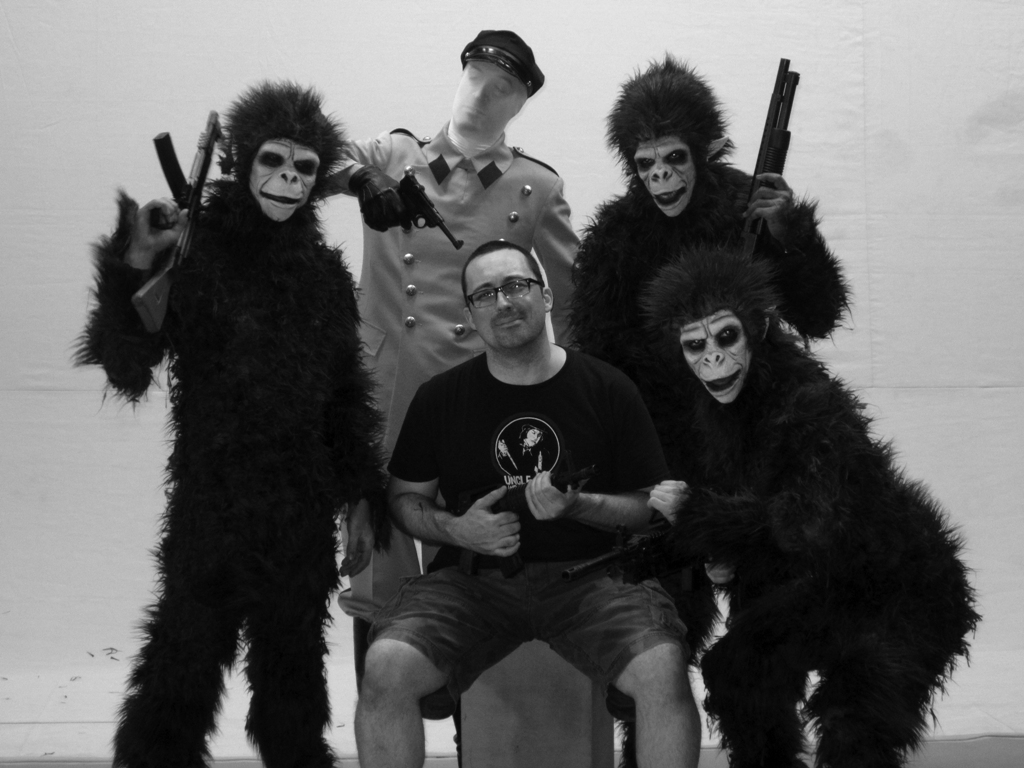
If you take a closer look at the most imaginative rock and metal videos of today, chances are you will come across the name of Phil Mucci as director. The American director has been able to create his own unique world that’s relying on animation and surreal / psychedelic / sci-fi elements to a great extent. People notice his works also, nothing proves it better than the fact that his works have been nominated and voted videos of the year by lots of metal magazines in the recent years. The video made for Monster Magnet’s The Duke has got this accolade by RockStation now. We asked Phil about his career, his techniques and his most memorable projects.
The videos you’ve done for rock bands lately became really popular. Are you a rock / metal fan yourself?
Yes, of course! I love music in general, but I’ve been listening to hard rock and metal since I was a kid. The first CD I ever bought was Ozzy Osbourne’s Diary of a Madman.
Having checked out the diabolikfilms.com site, it seems to me that you started with making rather “traditional” videos and only got to your emblematic comic book like videos later. How did your film making career started?
I started out as a photographer in New York City, shooting lots of music, fashion, and advertising – all with a very specia‐effects heavy style. But I became increasingly unhappy doing that type work, so when I finally had enough money, I made my first short film, The Listening Dead. I realized on the first day of shooting that making movies was what I really wanted to do, and when the finished film received
accolades from film festivals all over the world, I committed myself to the craft.
Getting into music videos wasn’t easy, though. I had to convince record labels that they could trust me to do what they wanted (at first). That’s why the early videos are more “standard” in style; the labels had more money then, and as a new director, I always had someone looking over my shoulder. Rick Ernst at Roadrunner Records was the first person to give the creative reigns completely on the Opeth video, and that’s really where I started developing my own unique visual style.
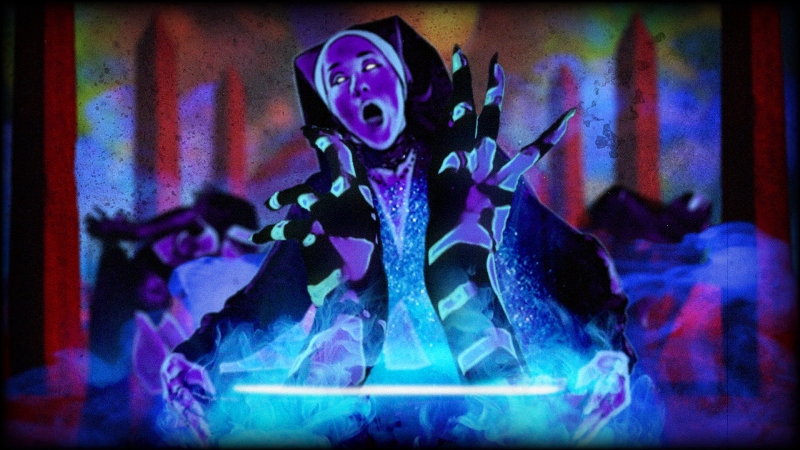
It’s not meant to be a “behind the scenes” kind of question but could you please reveal a few details about the techniques you’ve applied in some of your most recent videos?
The whole style I’ve developed was born out of necessity – namely, low budgets for music videos, and especially for rock and metal videos. When you have big ideas and no money, you look for any creative solutions you can find to help you tell your story. We shoot actors against green screen to save time and money on locations. We rely on shooting miniatures for cars and vehicles to save on rentals and insurance. We have custom miniatures built by artists starting out in the business who want to work with us and give us a great rate because they want to show off their skills. The press we’ve received on the finished videos help us enormously in this regard.
As far as a general technique, I’d say that what I decided with Opeth “The Devil’s Orchard” was that I was going to free myself from the shackles of photo-realism. It’s very expensive to do special-fx at the level you see in Hollywood movies, so I simply made the conscious decision not to compete with them. I decided that I wouldn’t be limited by that, and I would take more of my cues from animation and old movies that were made before the advent of computers. I love old school special FX, so it’s really fun to take that approach. I decide to apply a rotoscope animation look to my actors to help simplify their colors and blend them more with the surreal environments of the videos. We take a very broad approach to achieving certain visual FX, and I think that adds a level of excitement for the viewer. We’re not pretending anything is “real”, so there’s a freedom to go nuts and just embrace what looks cool.
If my observations are correct, the cast of your videos is often made of the same bunch of people. Are they your friends of members of your crew? Speaking of which, could you introduce us the members of your team?
There’s one guy who’s been in just about everything, from Opeth onwards, and that’s my producing partner Ian Mackay. We’ve been friends ever since we met on my second short film, Far Out. Ian does more than just act and produce, he’s actually the founder of our production company, Diabolik. He does stop-motion animation, model building and painting, and about a million other things. Without Ian, half our projects would’ve never turned out the way they did.
Another crucial member of our team is Jeff Speed, who’s worked on almost everything since High on Fire “Fertile Green”. We shoot with an extremely small crew, and Jeff is essential to our green screen shoot days as director of photography. He’s a friend and a filmmaker in his own right, so he knows how to work hard and get things done. His brother Chris Speed works on set with us as well, and actually build many of our custom miniatures, like the containment cell and pentagram UFO’s in Monster Magnet “The Duke”. These guys are the reason we’re able to get so much good footage on our shoot days, and so much magic in post-production.
Korn, Halestorm, Opeth, Pig Destroyer, Stone Sour, High On Fire, Huntress, Monster Magnet etc. Such an impressive list isn’t it. Do bands or their managements contact you with opportunities or do you contact them with some ideas that fit to a particular song of a band?
When I started out, I had agents and executive producers who made the introductions to record labels, who would then ask me to “write on something”. That’s how it works when nobody knows who you are - the label sends out a track and asks a bunch of directors to write a treatment for it. Then they choose their favorite treatments to show to the band. This method sucks, obviously, and gives all the power to the label. Nowadays, however, I’m approached directly by bands, management, and labels alike, with offers to actually do the video – not just write a treatment that “might” get made. This is a much better method for everyone, as I end up speaking directly with the band first and getting a sense of why they came to me, what they want, etc.
I only approached a band once with an idea for a specific song without being asked, and it was kind of a mistake, honestly. I spent almost two weeks making a video presentation because the song inspired me. While the band and their management loved it, the label had no intention of releasing the track as a single, so there was no money to make a video for it.
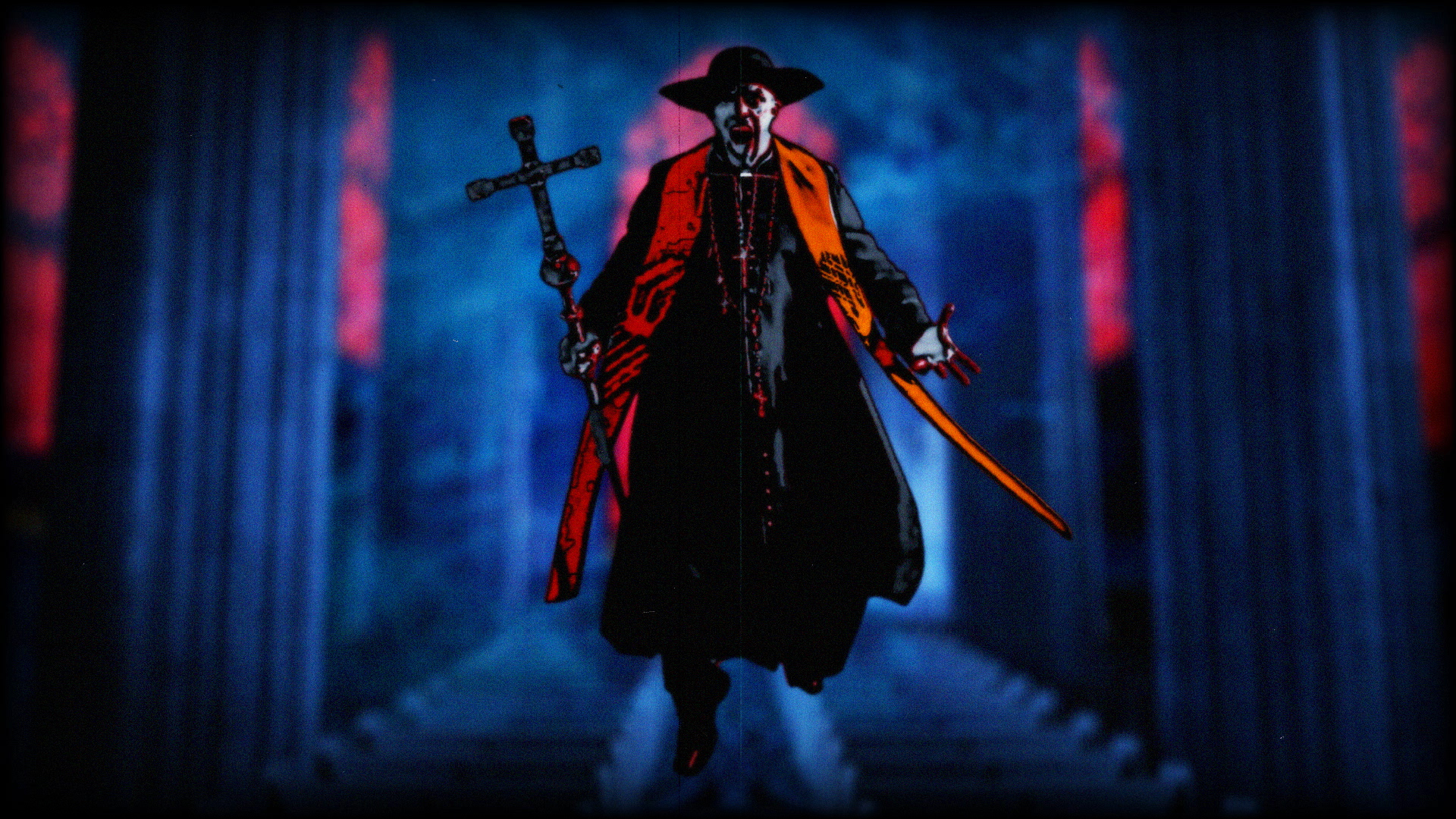
Is Opeth the first ever European band you’ve worked with? Have you got any more requests from Europe since then? Has any of your works been named best videos of the year by any European magazine / webzine (other than RockStation)?
As a filmmaker, yes, and I’ve definitely fielded offers from other European acts, though none have really come together yet. There’s definitely a larger rock and metal audience in Europe than in the States. My videos for Opeth, High on Fire, Pig Destroyer, and Monster Magnet all received a lot of accolades, though I’m not sure if they were ever named #1 before, so it’s an honor for sure!
Both Opeth and High on Fire were invited to play at Anim’est, an international animation film festival in Romania, but I didn’t get to attend. This year we’ll be entering some videos into the Berlin Music Video Awards, so if we get into that it should help us generate some projects over there.
Most of the videos you’ve done for the above artists show influences of sci-fi, fantasy, horror, thriller etc. Are these your favorite film genres? Which movies and directors are your main influences and inspirations?
Yes, I love genre filmmaking. Not the formulaic stuff, but the films where genre is used to express deeper ideas. What Romero did with the original Dawn of the Dead I think has influenced me more than I first realized. That film can be appreciated on multiple levels, which I think is the definition of cinematic art. David Cronenberg’s Videodrome and Paul Verhoeven’s RoboCop are other examples. Aesthetically speaking, I take a lot of inspiration from a variety of indie filmmakers who worked with low budgets, like Roger Corman, Jess Franco, and as I’ve said many times before – Mario Bava. What Bava could do with color, lighting, and simple in-camera special FX, never ceases to inspire me. The handmade “craft” of old-school filmmaking holds a special magic for me – for a lot of people, I think, whether they realize it or not.
Which of these videos was the most fun to make and with which artist was it the most difficult to work with? Can you recall any particularly funny or hilarious stories from the making of any of these videos?
As far as the best shoot day, it was probably Huntress. I mean, Jill Janus half-naked surrounded by sexy space nuns? What’s not to love?!
Nowadays, the band seldom appears in my videos, so I don’t really have any great anecdotes about that. And the ones that I have worked with directly have all been really great. Except for Korn.
Your works have been voted and nominated videos of the year for quite some time now by e.g. Revolver, Metal Injection, Noisecreep, Loudwire etc. Are there any such honors / accolades that make you particularly proud?
I’m really proud of the recognition we’ve received for The Duke from Loudwire and RockStation this year! That project was very important to us, and we spent more time on it in post-production than any other project – even investing our own money to see it through – so it means a lot that people noticed.
Can you reveal us what your next work will be? Besides music videos, do you plan on making some more short films like The Listening Dead and Far Out in the future?
Actually I’ve been dying to announce our next project, but the label has asked us to keep it under wraps. They’ve hired a publicist for the release, so we’ll see what they do with it. I’ve already finished the poster for it, though I still have lots to do on the video. What I CAN say is that it’s going to be sci-fi, psychedelic, sexy, and disturbing.
As for other projects, we’re actually talking about doing something longer, hopefully a feature, but we’ll see. Since I’ve been in Hollywood I’ve been “attached” to several features that never happened, so we’re really focusing on doing something independently. I hope to have some news on that later this year…
